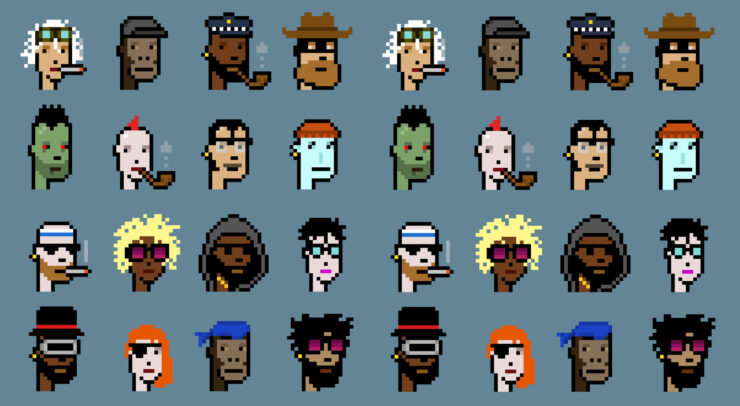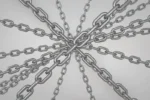
How to Organize NFT Collections for Better Sales
Interest in NFTs is booming again and those of us with collections are once again looking to capitalize on all of the extra attention in the space.
One of the most significant obstacles currently facing NFT artists and collectors is the effective organization of their collections.
Without proper organization, even the most valuable NFTs can get lost in a sea of digital assets, making it difficult for potential buyers to discover them.
This is where organization becomes critical.
A well-structured NFT portfolio can lead to better visibility, higher engagement, and ultimately more sales.
Platforms like ILUNAFRIQ make this process easier by offering a streamlined, multichain aggregation platform that allows users to organize, showcase, and promote their NFTs in a seamless way.
Key Takeaways
- Smart Sorting: Grouping your NFTs into clear categories makes them easier to find and boosts sales.
- Brand Consistency: Keep a unified look and story across your NFTs to build trust and recognition.
- Active Promotion: Engage with your audience and promote your collections to reach more buyers.
The Importance of Organizing Your NFTs
Before diving into the practical steps of organizing NFTs, it’s important to understand the why.
Disorganized collections often push buyers away because they create a confusing and frustrating experience.
Imagine a collector visiting your portfolio only to find scattered, unorganized assets across multiple platforms. It’s unlikely they’ll stick around to browse.
Organizing your NFTs isn’t just about aesthetics; it’s about creating a professional presentation that enhances discoverability.
When your collection is cohesive, potential buyers can easily navigate through it, find the pieces they like, and make a purchase decision.
Platforms like ILUNAFRIQ help by providing customizable galleries, ensuring your NFTs are displayed in a manner that maximizes visibility and buyer engagement.
The Importance of Mobile Optimization in NFT Sales
As mobile devices continue to dominate how users interact with digital content, optimizing your NFT gallery for mobile is no longer optional, it’s essential.
Many buyers prefer browsing and purchasing NFTs on the go, making mobile-friendly galleries a key component of successful NFT sales strategies.
Platforms like ILUNAFRIQ are designed with mobile-first functionality, ensuring that users can easily navigate, view, and purchase NFTs from their smartphones.
A well-optimized mobile gallery reduces friction in the buying process, allowing collectors to make quicker decisions and complete transactions seamlessly.
Here’s why you need mobile optimization in order to compete:
- Enhanced User Experience: Smooth navigation and fast-loading galleries improve overall engagement.
- Higher Conversion Rates: Mobile-friendly designs eliminate barriers, increasing the likelihood of impulse purchases.
- Broader Audience Reach: As more users shift to mobile browsing, having a responsive gallery ensures your NFTs are accessible to a larger audience.
How to Organize Your NFT Collection for Maximum Impact
Categorize by Type or Theme
The first step to effective organization is categorization. Group your NFTs based on relevant themes, such as art style, subject matter, or type (e.g., digital art, collectibles, music NFTs).
Because Ilunafriq consolidates all of your NFTs, you can group NFTs across blockchains and marketplaces. For example, you can group your NFTs by art style regardless of the blockchain or marketplace on which the NFT resides. Categorization helps potential buyers quickly find what they’re looking for without having to sift through unrelated content.
Tools like ILUNAFRIQ’s advanced organization features make it easy to create categories and sort your assets. For example, you can create separate sections for different types of art or even highlight limited-edition pieces.
Consolidate Across Multiple Platforms
One of the most common challenges NFT artists face is managing assets spread across various marketplaces. Whether your NFTs are on OpenSea, Rarible, or Foundation, switching between platforms to monitor and showcase your work can be time-consuming.
ILUNAFRIQ’s NFT aggregation solves this issue by centralizing your entire portfolio into a single, unified interface. This not only saves time but also ensures that your audience has a cohesive browsing experience.
Use Customizable Digital Galleries
Presentation matters, especially in the world of digital art, and a customizable digital gallery allows you to showcase your NFTs in a visually appealing and professional manner.
With ILUNAFRIQ’s personalized galleries, you can create a custom URL for your portfolio, making it easy to share with potential buyers, collectors, and fans.
Tailored galleries give you the flexibility to curate your collection’s appearance, highlighting specific works or collections that you want to promote.
This can be particularly useful for upcoming NFT drops or limited-time sales.
Optimize NFT Display Order
The order in which you display your NFTs can significantly impact buyer decisions. For example, placing your most valuable or popular pieces at the top of your gallery can capture attention and encourage purchases.
On ILUNAFRIQ we offer privacy control features that allow you to curate the order of your portfolio and even hide certain NFTs if needed.
This level of customization ensures that your best work is always front and center.
Utilize Cross-Chain Functionality
With NFTs spread across multiple blockchains, ensuring visibility for all your assets can be a challenge. Cross-chain compatibility is key to reaching a wider audience and increasing sales.
ILUNAFRIQ’s support for 14 blockchains ensures that no matter where your NFTs are minted, they can be easily integrated into your portfolio.
This full multichain support allows you to attract buyers from various blockchain ecosystems.
Optimize Your NFT Metadata
Metadata provides essential information about each NFT, such as its title, description, creator, and any unique attributes or properties.
This data not only helps potential buyers understand the story and significance behind each piece but also enhances the discoverability of your NFTs on various platforms.
By meticulously crafting and organizing your NFT metadata, you make sure that your collections are easily searchable and appealing to collectors.
Learn more about NFT metadata in our full guide here.
You can also learn about NFT metadata freezes.
How to Promote Organized Collections Effectively
Once your collection is well-organized, the next step is promotion.
Effective promotion simply means sharing your collection across social media, NFT communities, and direct channels to potential buyers.
ILUNAFRIQ’s integration with marketplaces simplifies this process by providing direct links from your gallery to purchasing platforms. This means that when you promote your portfolio on platforms like Twitter or Discord, potential buyers can seamlessly navigate from discovery to purchase.
You can also highlight and boost your collections on ILUNAFRIQ.
Giving Your Art Visibility: Highlighting vs. Boosting
Highlighting focuses on making your artwork visually pop within the gallery, essentially putting a spotlight on it to immediately grab the attention of potential buyers.
This feature helps your art stand out and ensures that it becomes a focal point when viewers explore your portfolio.
On the other hand, Boosting is designed to increase how often your artwork appears to users across the platform. By enhancing its frequency of visibility, you can attract more eyes, ultimately increasing the chances of making a sale.
How to Promote Your NFTs on ILUNAFRIQ
Promoting your NFTs is simple and efficient if you follow these steps:
- Log into your ILUNAFRIQ account and navigate to your profile.
- Find the NFT you want to promote and click on the three dots in the top right corner of its listing.
- Choose either the ‘Highlight It!’ or ‘Boost It!’ option from the dropdown menu.
- Follow the on-screen instructions to complete the promotion and maximize your NFT’s visibility.
Common Mistakes When Organizing Your NFT Collection
While organizing your NFT collection can lead to better sales, there are common mistakes you should avoid:
- Overcomplicating the Categorization Process: Don’t create too many categories or subcategories, as this can confuse buyers. Keep it simple and intuitive.
- Neglecting Updates: Your portfolio should be a living entity. Regularly update it with new NFTs, remove sold or outdated items, and refresh the presentation to keep it engaging.
- Ignoring Analytics: Understanding which NFTs attract the most attention can help you refine your collection.
Example Situation
Consider the case of an NFT artist who might be struggling with managing assets across multiple platforms. After switching to a platform like ILUNAFRIQ, they would be able to consolidate their portfolio, create a visually appealing digital gallery, and promote their work more effectively.
As a result, they would experience increased visibility and a potential boost in interest in their collection, turning casual browsers into serious buyers, demonstrating the power of a well-organized NFT collection.
Conclusion
Organizing your NFT collection is a crucial step toward maximizing visibility and sales, especially as interest in the space continues to grow.
By sorting your assets into categories, bringing them together across platforms, and using customizable galleries, you can build a unified and engaging portfolio.
Platforms like ILUNAFRIQ give you the tools you need to streamline this process, from advanced organization features to cross-chain support.
Take control of your NFT portfolio today, and see the difference a well-organized collection can make.
Ready to get started? Visit ILUNAFRIQ and transform the way you showcase and sell your NFTs.
FAQ
How many NFTs should be in a collection?
The ideal number of NFTs in a collection varies, but it should be large enough to showcase diversity and creativity while remaining manageable for effective organization and promotion.
How to categorize NFT collections?
To categorize NFT collections effectively, group them by themes, styles, type, or series to enhance discoverability and appeal to potential buyers.
What should be in my NFT metadata?
Your NFT metadata should include essential details such as the title, description, creator information, and unique attributes to provide context and enhance discoverability for potential buyers.
What is the best platform to use for organizing NFT collections?
The best platform for organizing NFT collections is one that offers advanced organization tools and marketplace integrations, like ILUNAFRIQ, to streamline asset management and boost sales.




